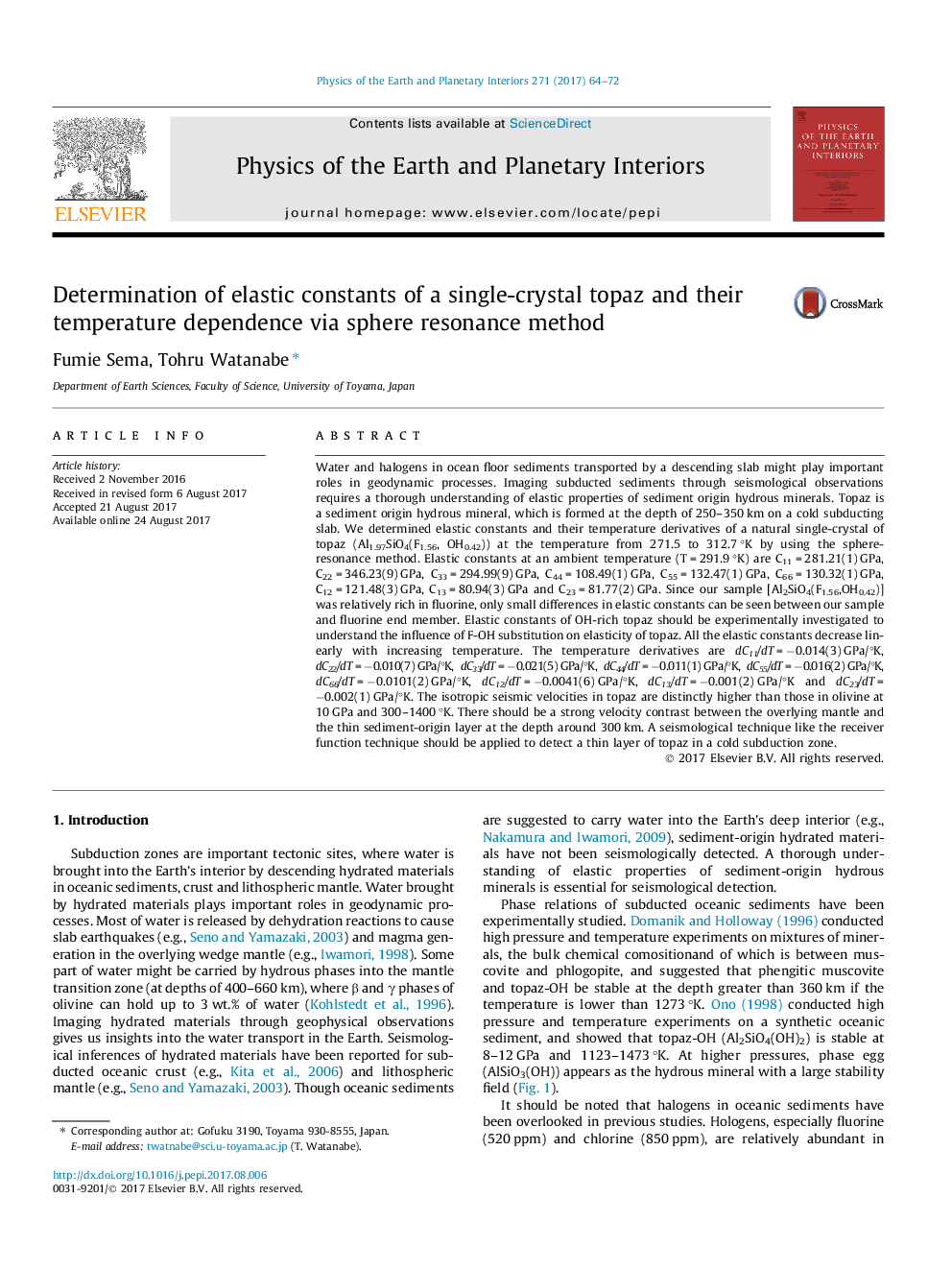| Article ID | Journal | Published Year | Pages | File Type |
|---|---|---|---|---|
| 5787270 | Physics of the Earth and Planetary Interiors | 2017 | 9 Pages |
â¢Elastic constants of a single-crystal topaz were determined.â¢All the elastic constants decrease linearly with increasing temperature.â¢Seismic velocities in topaz, olivine and garnet are compared at 10 GPa.â¢Topaz will show distinctly high velocity at the slab-mantle interface.
Water and halogens in ocean floor sediments transported by a descending slab might play important roles in geodynamic processes. Imaging subducted sediments through seismological observations requires a thorough understanding of elastic properties of sediment origin hydrous minerals. Topaz is a sediment origin hydrous mineral, which is formed at the depth of 250-350 km on a cold subducting slab. We determined elastic constants and their temperature derivatives of a natural single-crystal of topaz (Al1.97SiO4(F1.56, OH0.42)) at the temperature from 271.5 to 312.7 °K by using the sphere-resonance method. Elastic constants at an ambient temperature (T = 291.9 °K) are C11 = 281.21(1) GPa, C22 = 346.23(9) GPa, C33 = 294.99(9) GPa, C44 = 108.49(1) GPa, C55 = 132.47(1) GPa, C66 = 130.32(1) GPa, C12 = 121.48(3) GPa, C13 = 80.94(3) GPa and C23 = 81.77(2) GPa. Since our sample [Al2SiO4(F1.56,OH0.42)] was relatively rich in fluorine, only small differences in elastic constants can be seen between our sample and fluorine end member. Elastic constants of OH-rich topaz should be experimentally investigated to understand the influence of F-OH substitution on elasticity of topaz. All the elastic constants decrease linearly with increasing temperature. The temperature derivatives are dC11/dT = â0.014(3) GPa/°K, dC22/dT = â0.010(7) GPa/°K, dC33/dT = â0.021(5) GPa/°K, dC44/dT = â0.011(1) GPa/°K, dC55/dT = â0.016(2) GPa/°K, dC66/dT = â0.0101(2) GPa/°K, dC12/dT = â0.0041(6) GPa/°K, dC13/dT = â0.001(2) GPa/°K and dC23/dT = â0.002(1) GPa/°K. The isotropic seismic velocities in topaz are distinctly higher than those in olivine at 10 GPa and 300-1400 °K. There should be a strong velocity contrast between the overlying mantle and the thin sediment-origin layer at the depth around 300 km. A seismological technique like the receiver function technique should be applied to detect a thin layer of topaz in a cold subduction zone.
